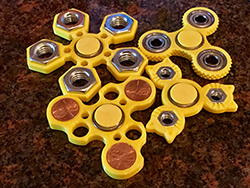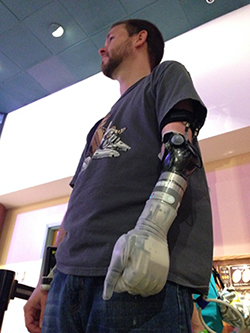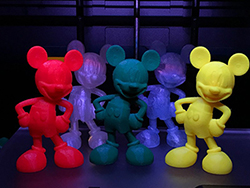Meet Wallace and Learn to Love 3D Printing
March 21, 2017“That’s amazing!” (or some variation) are usually the first words people say when I show them a 3D printed object. That I created. On my home 3D printer.
Hi, I’m Wallace and I work at Sealevel. I focused on mechanical engineering
I’ve always considered myself a tinkerer. My parents encouraged me to tear into broken appliances and toys, to see how they worked, and to try and put them back together again. As an aside, they weren’t too happy about me disassembling the family microwave oven and VCR. They were still operational; that was, until I took a screwdriver to them.
Fast forward to 2017 and the age of 3D printing is upon us. Well, it has been here for several years, but prices and complexity have kept most people away. However, we’ve watched prices continue to drop and you can now buy a capable 3D printer for around $200.

A few years ago, Sealevel bought a couple of Makerbot 3D printers for R&D and they quickly became part of the prototyping process. Sealevel also donated 3D printers to the STEM program at one local middle school and the high school career center. The middle school partnered with Enabling the Future, who helped them design and print a prosthetic hand for a local elementary student.
As a congenital left arm amputee, a 3D printed prosthetic was very alluring to me. Traditional body-powered prosthetics are around the price of a small family sedan. Advanced bionic prosthetics exceed the price of many luxury cars. I was lucky enough to be a research subject for the Luke arm, one of the most advanced bionic prosthetics available, and got to bring it home for three months. But my hopes of joining the bionic revolution are currently wrapped up in insurance red tape.
Back in January, I stumbled across a low mileage Makerbot Rep2 on Craigslist. After a couple of phone calls to the owner, and a few friends with their own 3D
I started printing small objects I found on Thingiverse and graduated to fidget spinners. These test objects help me get familiar with the tolerances and strength of 3D printed parts. I discovered that the orientation of a part on the build plate will greatly affect its strength. Using inexpensive PLA filament, most objects cost a few dollars at the most. It’s very cost-effective to make minute changes and print several variations to test. Try doing that with other manufacturing methods.
Owning my own 3D printer has helped prepare me for eventually designing my own 3D printed arm. If I can’t buy a bionic prosthetic, maybe I can build my own!